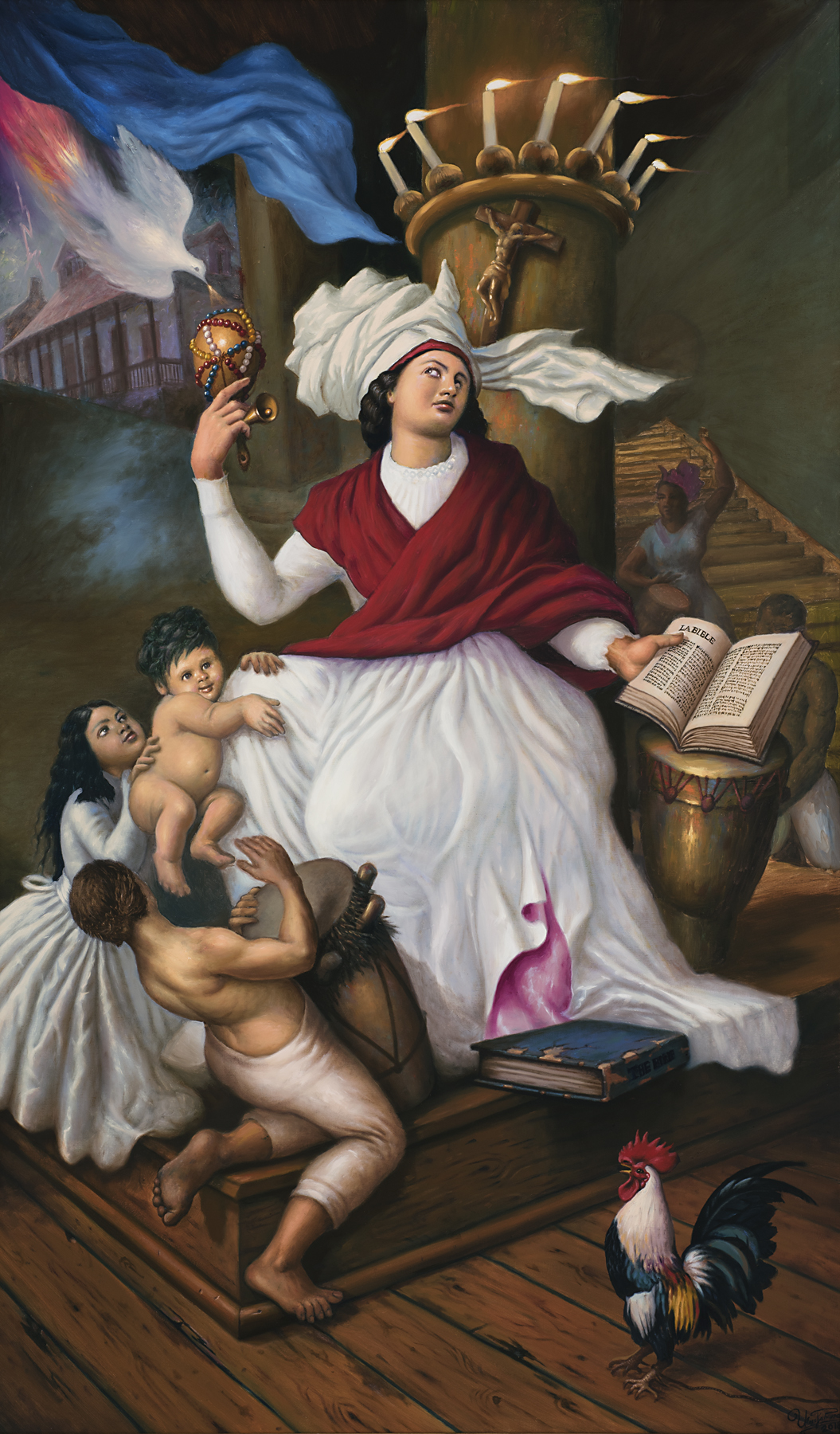Marie Laveau, Ulrick Jean-Pierre (born 1955)
Artwork Overview
Marie Catherine Laveau (1801–1881) was an important Creole “manbo,” or priestess, who was integral to the development of the Vodou religion in New Orleans, where it is known as Voodoo. This religious practice has roots in Haiti and mixes elements of Catholicism with African and West Indian spiritual beliefs. Laveau’s portrait contains many symbols that reference this blend of religious and cultural traditions. For instance, Laveau holds a bell and an “asson” (a sacred rattle often made from a gourd and covered in beaded string), both of which are important tools in Vodou ritual. Likewise, the rooster and dove in the lower right and upper left corners of the painting are associated with some of the seven “lwas,” or spirits, that animate Vodou belief. The seven candles burning atop the pillar likely reference these “lwas” as well. The painting also includes Christian symbolism, such as the crucifix and the two versions of the Bible—one in English, one in French— which further references the bilingual and bicultural environment of 19th-century New Orleans.
Laveau’s life is shrouded in mystery and myth, making it difficult to separate historical fact from cultural legend. Much of what is known about her comes from oral history. Nevertheless, it appears that Laveau and her daughter, Marie Laveau II, practiced not only New Orleans Voodoo but also Native American rituals, spiritualism, and rootwork—a traditional African American folk spirituality of the southern United States derived from West African belief. Laveau remains one of the most admired and controversial figures in New Orleans’s history and is still considered the “Voodoo Queen of New Orleans.”
